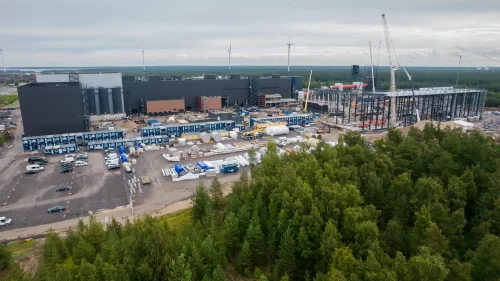The importance of industrial electricity infrastructure
The growing demand for energy from industry places high demands on electricity infrastructure. An efficient and reliable substation is a vital part of industrial operations, ensuring a continuous and uninterrupted energy supply. The design and construction of substations must take into account not only current but also future needs to meet the evolving technology and growing energy demands of industry.
Building a quality substation requires a deep understanding of both electrical engineering and construction materials such as concrete. Concrete structures provide durability and safety for substations that are exposed to a variety of weather conditions and mechanical stress. In addition, the fire resistance of concrete is an important factor in the design of substations, as it increases the safety of the structures in the event of an accident.
Design and implementation of substations
The design of substations requires a multidisciplinary approach that combines the requirements of electrical engineering with the properties of building materials. During the design phase, it is important to consider the overall functionality, energy efficiency and environmental impact of the substation. Structural design requires particular attention to detail, as substations must be able to withstand decades of heavy use without requiring significant maintenance.
During the implementation phase, quality control and occupational safety are key. Building materials, such as concrete, must meet strict standards to ensure that the end result is as durable and safe as intended. On-site safety regulations ensure that the substation is built safely and without delays.
Energy efficiency and environmental friendliness
Energy efficiency is key in today's industry, and it extends to the construction of substations. Energy-efficient substations reduce the carbon footprint of industry and save costs in the long term. The use of environmentally friendly building materials, such as recycled concrete, is one way to promote sustainability in substation construction.
Safety and sustainability
The safety of substations is of paramount importance, as they are critical components of the industrial energy supply. Security considerations include both physical resilience and the ability to protect against external threats such as vandalism or natural disasters. Concrete structures provide reliable protection against these risks and can be designed using the latest innovations, such as smart concrete, which improves the durability and monitoring of structures.
Durability is not limited to structural strength, but also covers the lifecycle maintenance and servicing of the substation. Sustainable substations are designed to be energy efficient and easy and cost-effective to maintain.
The emerging construction sector and substations
The construction sector has traditionally been quite conservative, but new technologies and practices have brought about significant changes. In substation construction, for example, this is reflected in the use of digitalisation in design and construction. Virtual reality and 3D modelling are examples of tools that enable more accurate planning and more efficient site management.
The evolving construction sector also requires continuous skills development. Professionals specialising in substation construction need to keep up to date with the latest materials, technologies and regulations. Training and certification are key to enabling construction professionals to build safe, sustainable and energy-efficient substations for industry.








